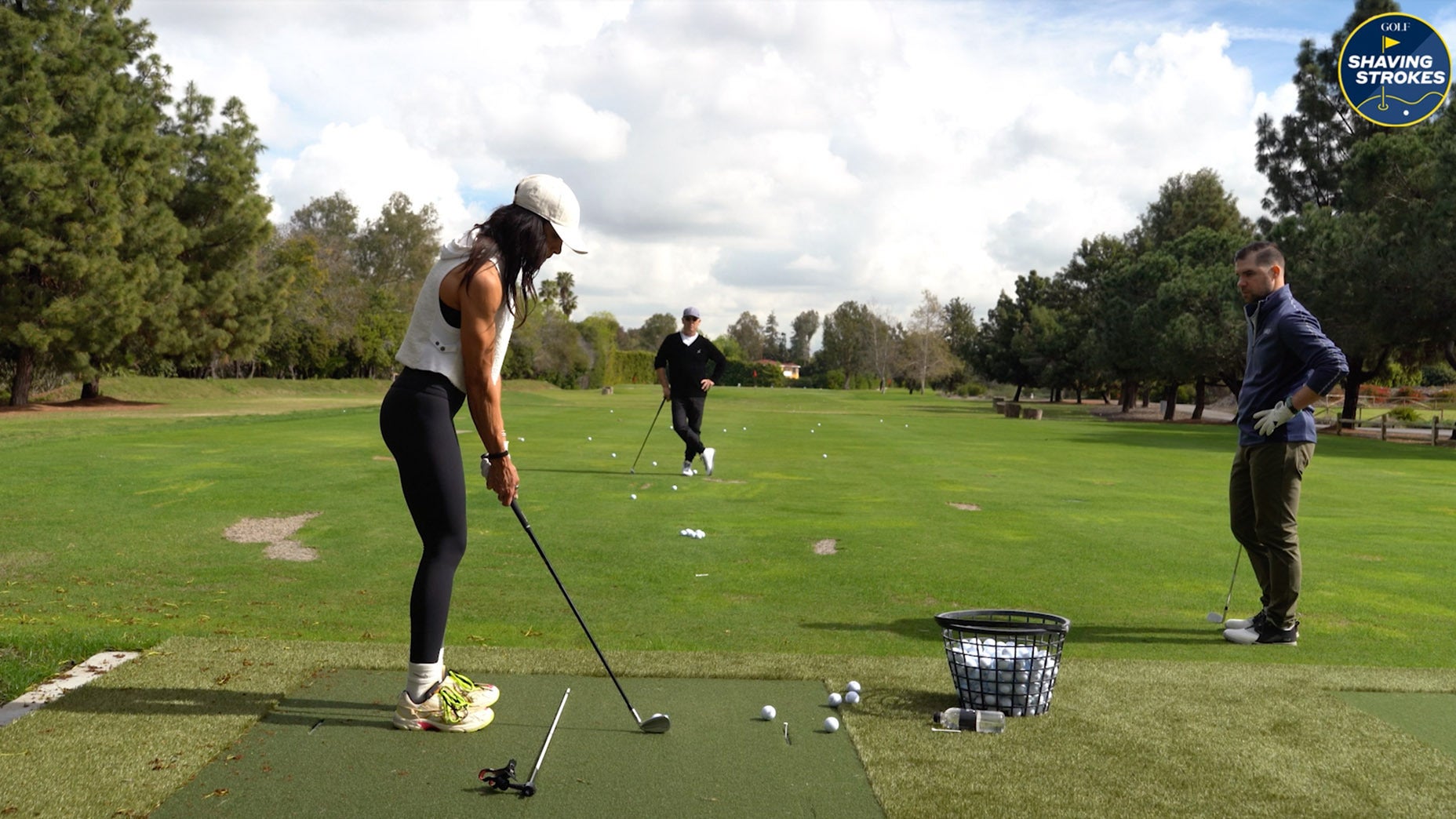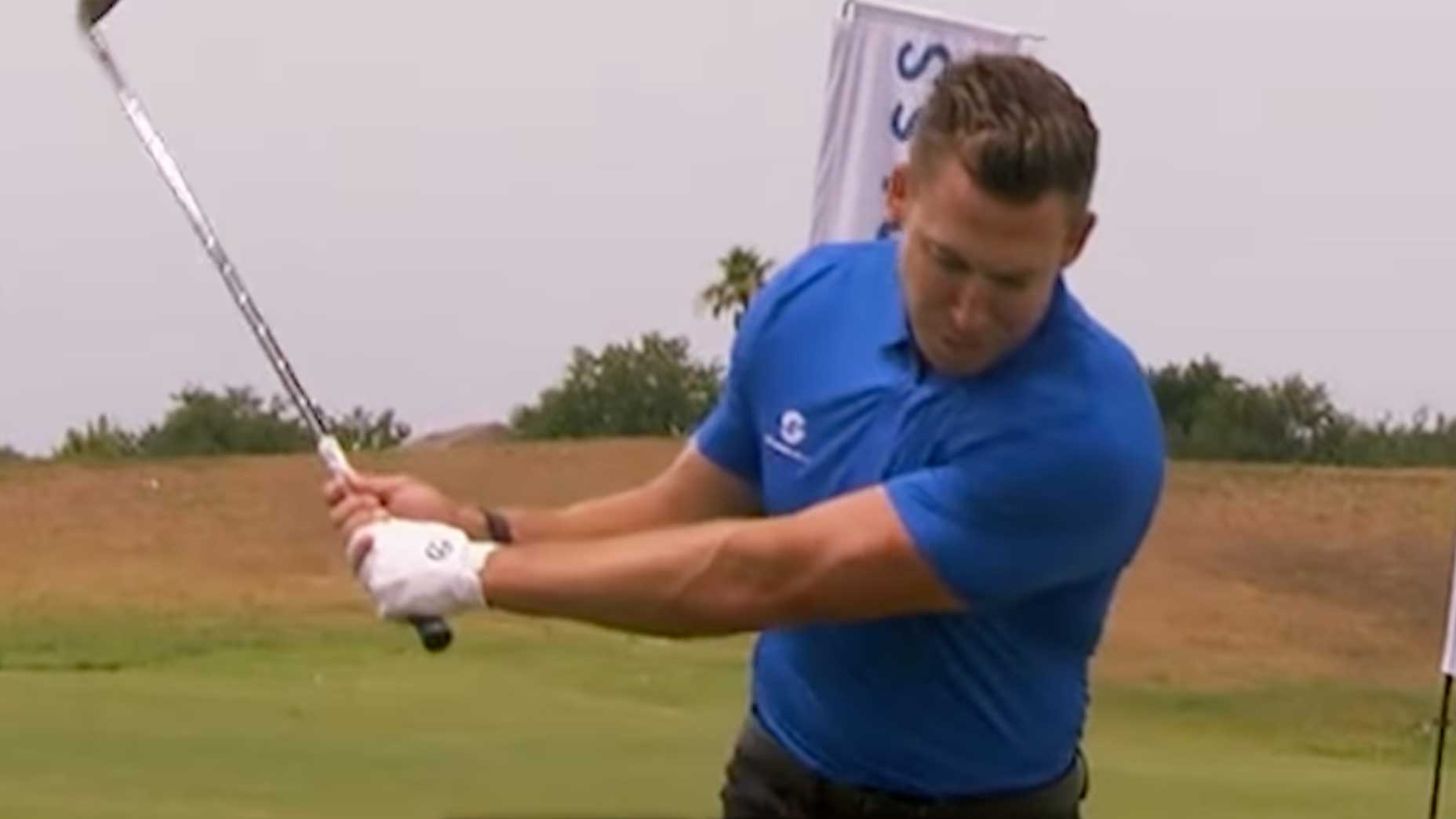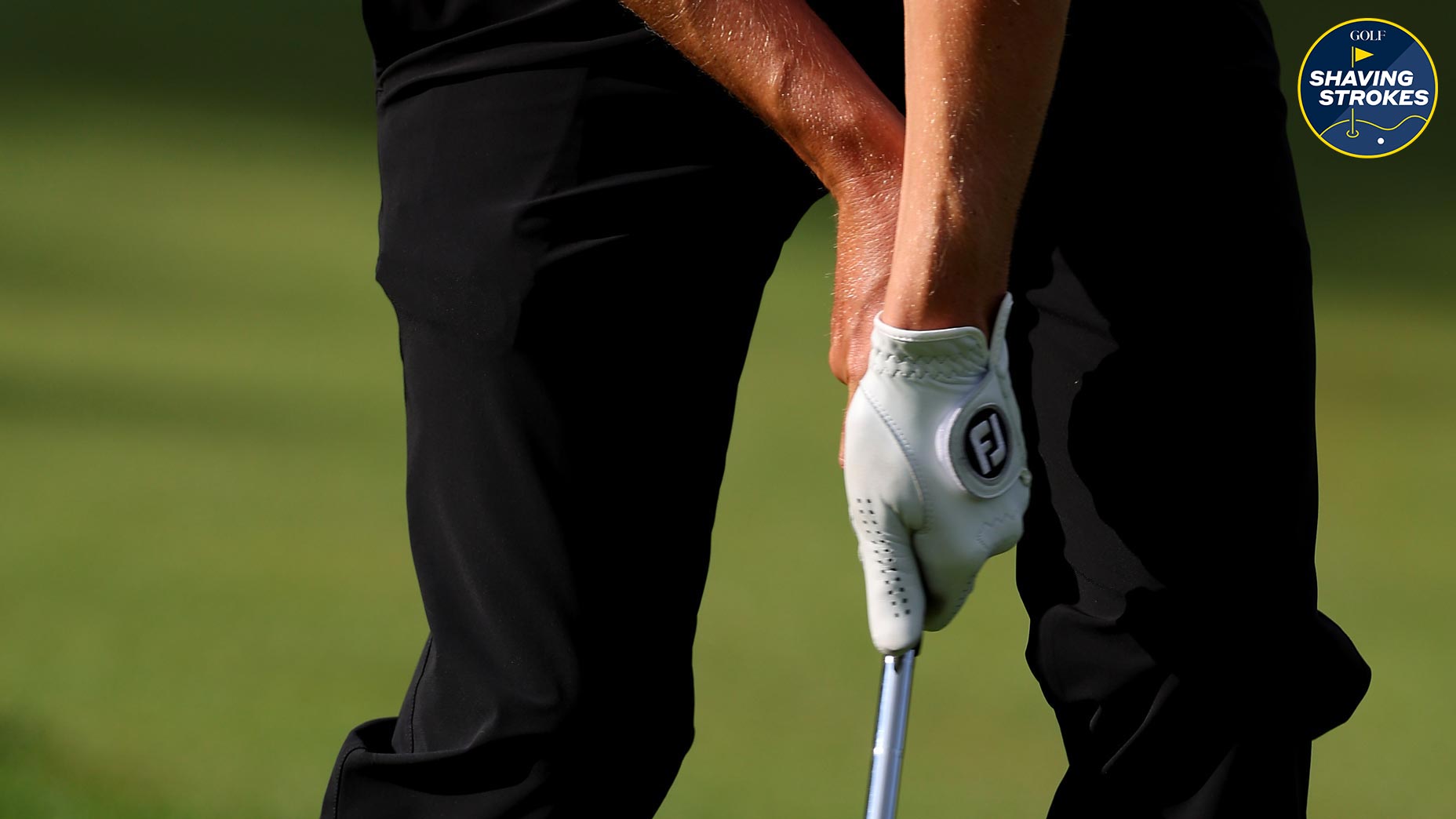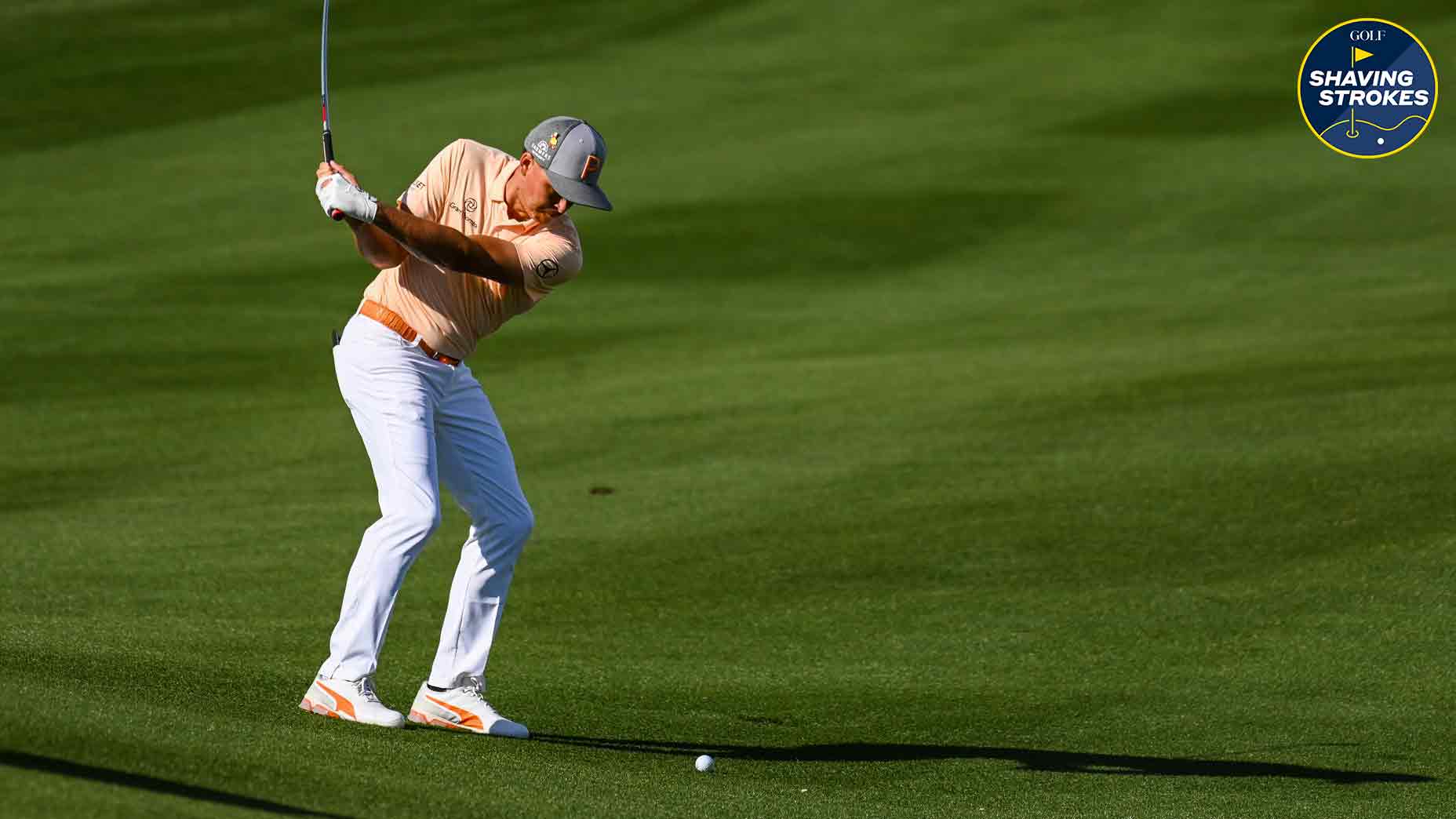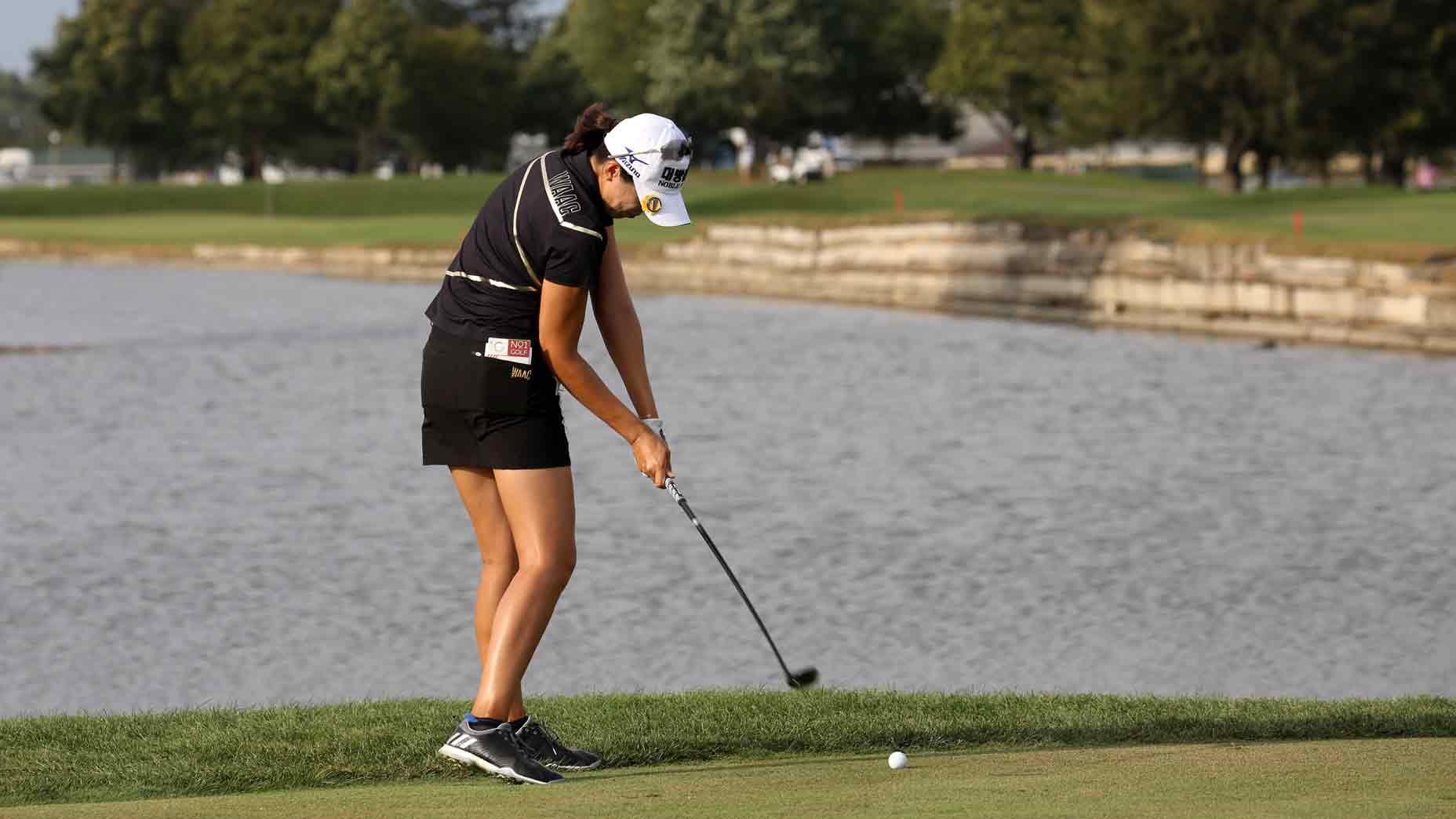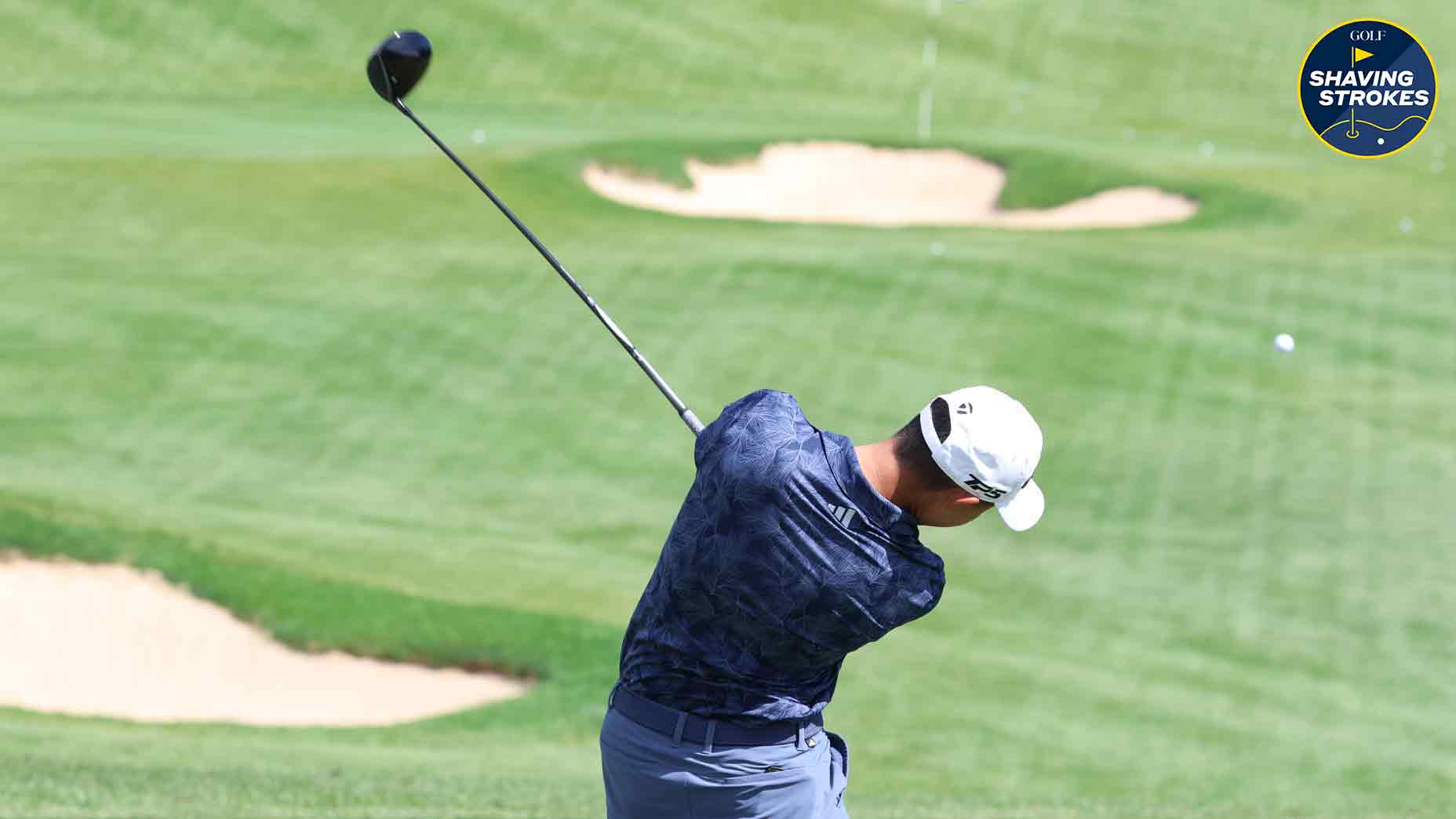1 common error that’s holding back your chip shots (and what to do instead)
- Share on Facebook
- Share on Twitter
- Share by Email

Are you using the right club on your chip shots? Golf Instructor Grayson Zacker shares why many amateurs don't make the correct choice.
Getty Images
Welcome to Shaving Strokes, a new GOLF.com series in which we’re sharing improvements, learnings and takeaways from amateur golfers just like you — including some of the speed bumps and challenges they faced along the way.
I don’t know when it started, but at some point in my playing days, I made the decision to use the same club on every chip shot — my pitching wedge.
As I’ve improved my game and have gotten smarter, I know this is a major fail on my part.
Since no two shots are the exact same on the golf course, by always defaulting to my pitching wedge, I was holding myself back. I wasn’t assessing the shot in front of me, but instead was comparing the scenario to previous shots.
Chipping vs. pitching: Know the difference and when to use eachBy: Adam Smith, GOLF Teacher to Watch
But just because a player is around the green doesn’t mean it always calls for using the same club.
Sure, I know there’s something to be said about being comfortable with a certain club. But if the conditions are wet versus dry, or the rough is thick versus short, or the pin placement is 10 feet closer than it was on the previous hole, there’s a very good chance I won’t see the success I want on my chip shots.
Here’s the thing, though — I’m not the only amateur who does this.
Diversify your club selection for better chip shots
According to golf instructor Grayson Zacker, the director of instruction for Jim McLean Golf Schools, locking in on just one club for chip shots is a common problem that many players (mistakenly) make.
“When a student asks for help with their chipping, I usually start by asking them what clubs they typically chip with,” Zacker says. “They often tell me they always use their sand wedge on chip shots.”
While it seems logical to get good with just one club, Zacker says it’s not the easiest way to do it.

“You should use the least amount of loft possible to get the job done,” he adds. “It’s a lot easier to get the clubface on the back of the ball when you have less loft.
“Also, the difference between a solid shot and hitting something thin improves when using less loft. Because if you take a big swing with a sand or lob wedge, the thin shot goes screaming over the green!”
Zacker says that every club in your bag should be considered when chipping and that using your putter from the fringe (aka a Texas wedge) can lead to positive results.
“If you’re just off the green and you have nothing but short grass between you and the hole, the putter is a smart play,” he says. “For amateurs who aren’t super confident in their chipping, their worst putt is always better than their worst chip.”
If the shot in front of you doesn’t allow for the putter — whether because of longer grass or the distance to the hole — Zacker suggests pulling a hybrid out.
“Don’t overlook the hybrid while chipping,” he adds. “It has just enough loft to make the ball ‘scoot’ through the fringe, and it’ll jump off the face; which is great for long chips.”
Finally, Zacker says a good rule for players to follow is the air-to-roll ratios with certain clubs. Here is the guide he uses for flat-to-medium-speed greens:
8-iron: 1/4 air, 3/4 roll.
Pitching wedge: 1/3 air, 2/3 roll.
56-degree wedge: 1/2 air, 1/2 roll.
“By taking less loft, you’ll use a smaller and simpler stroke, helping eliminate the chances of something going wrong,” he adds. “You’ll increase your chances of making good contact and, if you do mishit it, it won’t be as disastrous as a more lofted club — which will save you a lot of strokes.”

Rukket Sports Haack Chipping Net with Turf Mat & 12 Practice Balls
$69.99
View Product
Latest In Instruction

Golf.com Contributor

Nick Dimengo
Golf.com Editor



